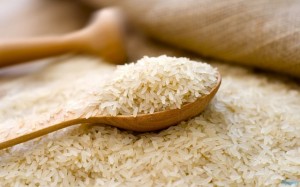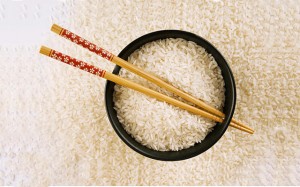
Worldwide there are 40,000 rice varieties. Chandrika Group of Rice Mills is the proud manufacturer of Par Boiled, White Rice, Long Grain, Short Grain, Brown Rice, Double Polished, Swarna, Broken Rice, and Sona Masuri rice varieties under the brand name CHANDRUDU MARK (Moon Brand in English) rice varieties.
Parboiled Rice
Parboiled rice means that rice will be partially boiled in the husk so that it won’t lose its natural Minerals and Vitamins. The three basic steps of parboiling are soaking, steaming, and drying. About 50% of the world’s paddy production is parboiled. The treatment is practiced in many parts of the world such as India, Nepal, Myanmar, Guinea, Bangladesh, Pakistan, Italy, Malaysia, Switzerland, Sri Lanka, South Africa, Spain, France, Nigeria, Thailand, and the USA.
In this Process starches in parboiled rice become bioavailability in the diet. Parboiled rice is favored by consumers and chefs who desire extra fluffy and separate cooked rice.

White Rice

White rice is milled rice that husk, bran, and germ removed. Regular-milled white rice, often referred to as “white” or “polished” rice is the most common form of rice. The outer husk is removed, and the layers of bran are milled until the grain is white. This Changes the flavor, texture, and appearance of the rice and helps prevent spoilage and extend its storage life.
The milling and polishing processes both remove important nutrients. Commonly, 100 grams of uncooked rice produces around 240 to 260 grams of cooked grains, the difference in weight owing to the absorbed cooking water.
Brown Rice
Brown rice is a “hulled” or “unmilled” rice and it is whole grain rice. Cooked brown rice has a slightly chewy texture and a nut-like flavor, but more nutritious than white rice. Brown rice and white rice have similar amounts of calories and carbohydrates. The main differences between the two forms of rice lie in the processing and nutritional content.
When only the outermost layer of a grain of rice (the husk) is removed, brown rice is produced. To produce white rice, the next layers underneath the husk (the bran layer and the germ) are removed, leaving mostly the starchy endosperm. Several vitamins and dietary minerals are lost in this removal and the subsequent polishing process.
The light brown color of brown rice is caused by the presence of bran layers which are rich in minerals and vitamins, especially the B-complex group.

Sona Masoori

Sona Masoori is also known as HMT, Sona Masuri, Samba Masuri, Jeela masuri or BPT 5204. It is a medium-grain rice grown largely in the Indian states of AP and Karnataka. In Telugu, Sona Masuri rice is called Bangaru Theegalu it means Golden Ivy.
It is aromatic and lightweight. This premium variety of rice is mainly exported to the USA, Malaysia, Singapore, Canada, Australia, Europe, Malaysia, and Middle East countries such as Qatar, Saudi Arabia, and UAE.
In AP, it is mainly cultivated in the Warangal, Nellore, Guntur, Nizamabad, Kurnool, Mahaboobnagar, and West Godavari districts. In Karnataka, it is mainly cultivated in the Bellary, Koppal, and Raichur districts.